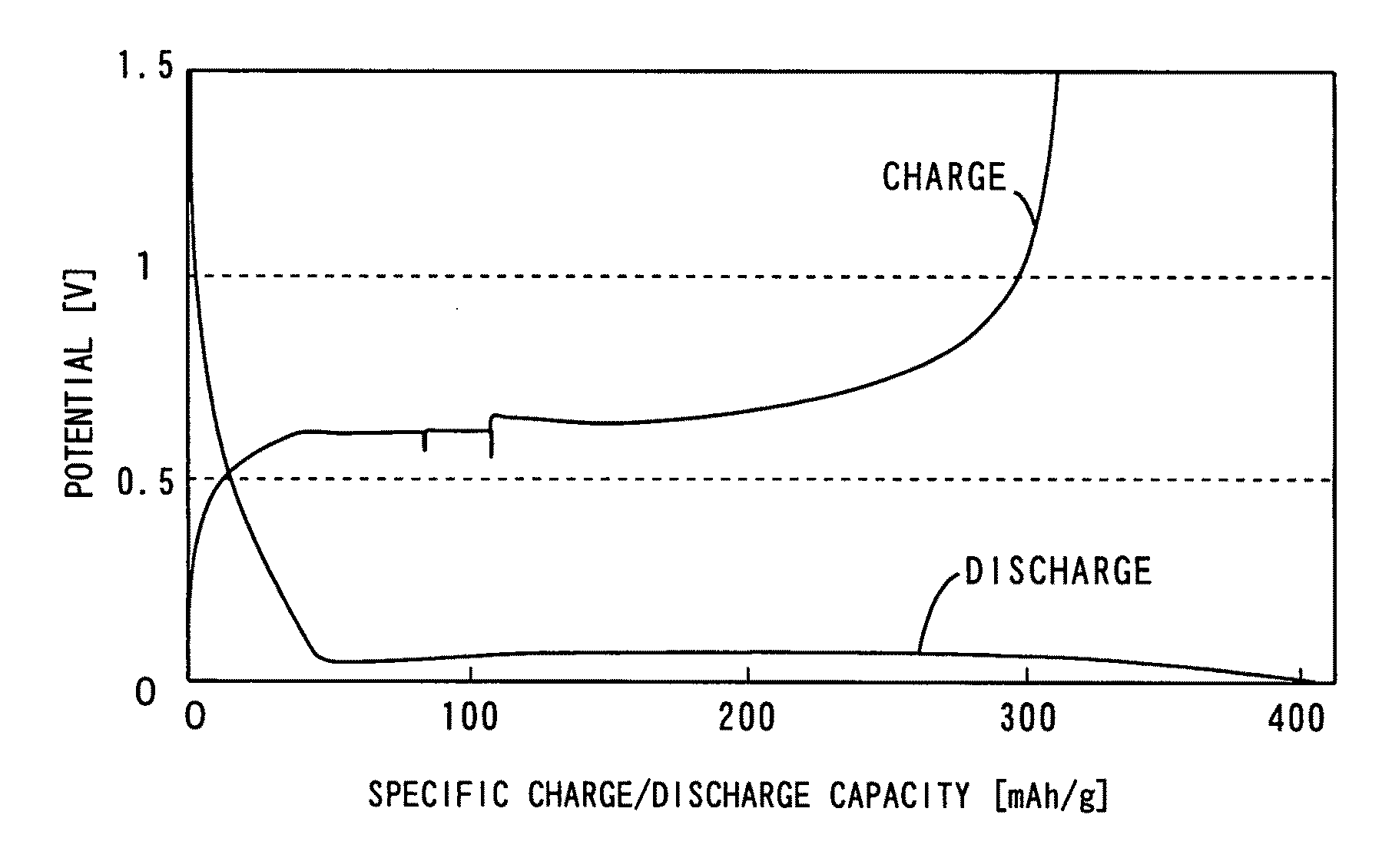Negative electrode and non-aqueous electrolyte secondary battery using the same
a secondary battery and negative electrode technology, applied in the direction of non-aqueous electrolyte cells, cell components, electrochemical generators, etc., can solve the problems of short circuit between the negative electrode and the negative electrode, sodium ions are not stored in and released from the negative electrode, and the safety cannot be secured. to achieve the effect of reducing the cos
- Summary
- Abstract
- Description
- Claims
- Application Information
AI Technical Summary
Benefits of technology
Problems solved by technology
Method used
Image
Examples
first embodiment
[0036]The non-aqueous electrolyte secondary battery according to the embodiment includes a positive electrode, a negative electrode, and a non-aqueous electrolyte.
[0037]Note that the materials, and the thickness, the concentrations and the like of the materials are not limited to those in the following description and may be set as required.
[0038]
[0039]A rolled foil of surface roughened copper as thickness as 26 μm for example having a surface formed into an irregular shape with copper precipitated thereon by an electrolytic method is prepared as a negative electrode collector.
[0040]Elemental tin (Sn) having a thickness of 2 μm for example is deposited on the rolled foil described above and a negative electrode active material layer is formed. Note that the deposited elemental tin is amorphous.
[0041]Then, the rolled foil having the negative electrode active material layer formed thereon is cut into a 2-by-2 cm piece and a negative electrode tab is attached to the rolled foil, so tha...
second embodiment
[0063]A non-aqueous electrolyte secondary battery according to a second embodiment is different from the non-aqueous electrolyte secondary battery according to the first embodiment in the structure of the negative electrode, which will be described in detail.
[0064]
[0065]A rolled foil of surface roughened copper as thick as 26 μm for example having a surface formed into an irregular shape with copper precipitated thereon by an electrolytic method is prepared as a negative electrode collector.
[0066]A negative electrode active material layer of elemental germanium (Ge) as thick as 0.5 μm for example is deposited on the negative electrode collector of the rolled foil described above using a sputtering machine shown in FIG. 3 and germanium powder. The deposition condition is given in Table 1. Note that the deposited elemental germanium is amorphous. The elemental germanium to be deposited may be in a thin film state or a foil state.
TABLE 1sputter sourceRF frequency13.56MHzRF power200Warg...
third embodiment
[0075]A non-aqueous electrolyte secondary battery according to the embodiment is different from the non-aqueous electrolyte secondary battery according to the first embodiment in the structures of the negative electrode and the positive electrode, which will be described in detail.
[0076]
[0077]A rolled foil of surface roughened copper as thick as 26 μm for example having a surface formed into an irregular shape with copper precipitated thereon by an electrolytic method is prepared as a negative electrode collector.
[0078]A negative electrode active material layer of elemental germanium as thick as 0.5 μm for example is deposited on the negative electrode collector of the rolled foil described above using the above-described sputtering machine shown in FIG. 3 and germanium powder. The deposition condition is the same as that in Table 1. Note that the deposited elemental germanium is amorphous. The elemental germanium to be deposited may be in a thin film state or a foil state.
[0079]To ...
PUM
| Property | Measurement | Unit |
|---|---|---|
| mean roughness | aaaaa | aaaaa |
| mean roughness | aaaaa | aaaaa |
| arithmetic mean roughness | aaaaa | aaaaa |
Abstract
Description
Claims
Application Information
 Login to View More
Login to View More - R&D
- Intellectual Property
- Life Sciences
- Materials
- Tech Scout
- Unparalleled Data Quality
- Higher Quality Content
- 60% Fewer Hallucinations
Browse by: Latest US Patents, China's latest patents, Technical Efficacy Thesaurus, Application Domain, Technology Topic, Popular Technical Reports.
© 2025 PatSnap. All rights reserved.Legal|Privacy policy|Modern Slavery Act Transparency Statement|Sitemap|About US| Contact US: help@patsnap.com



